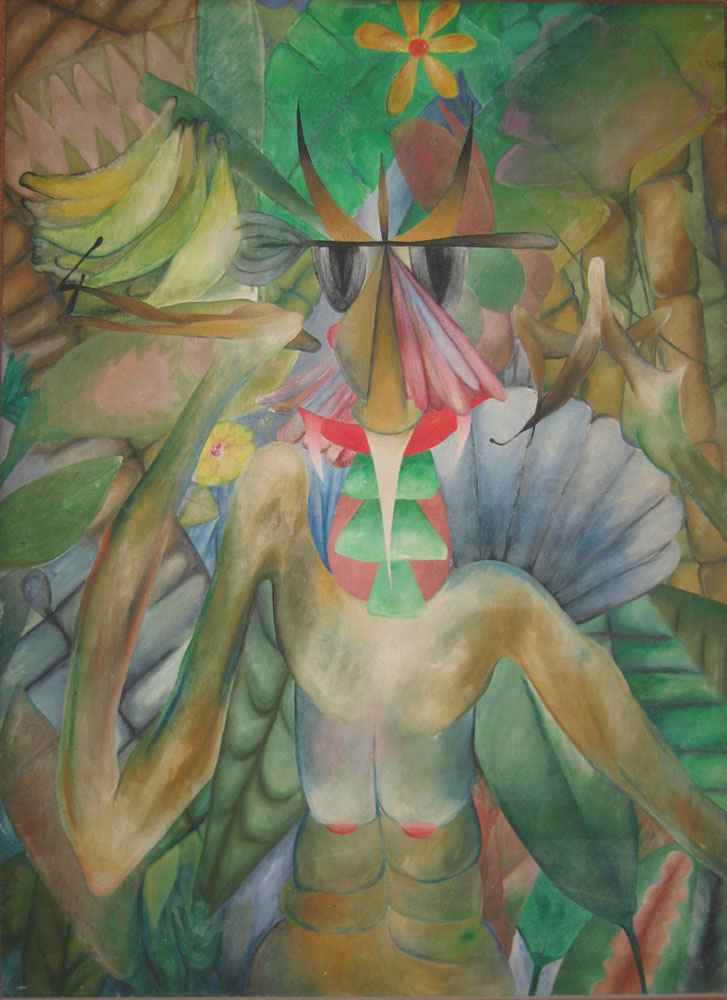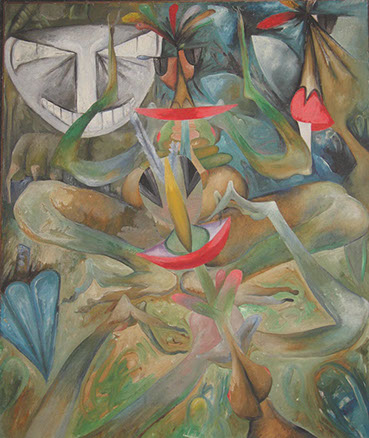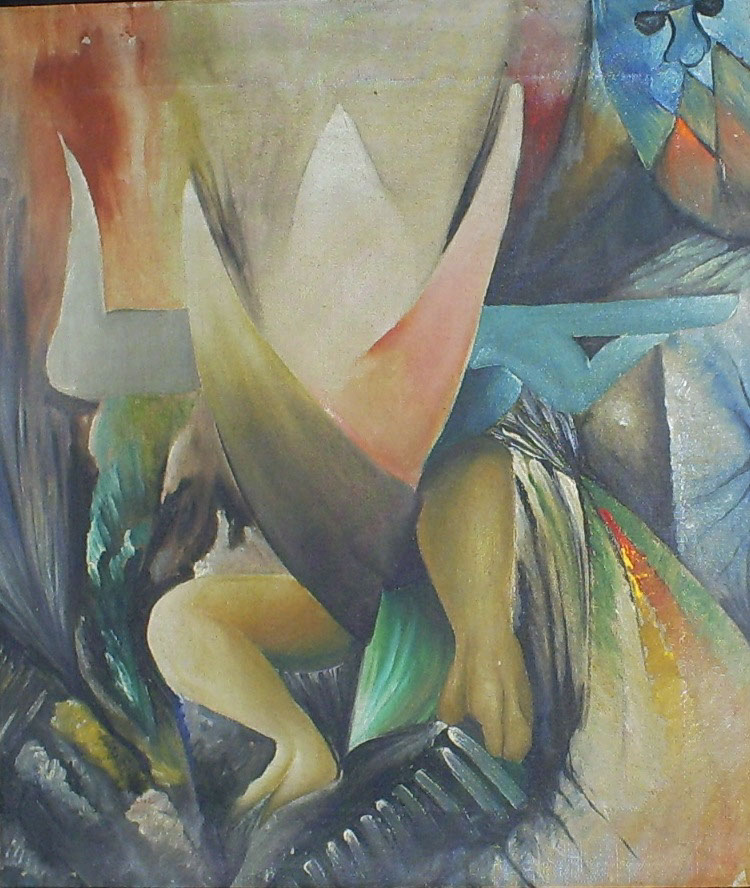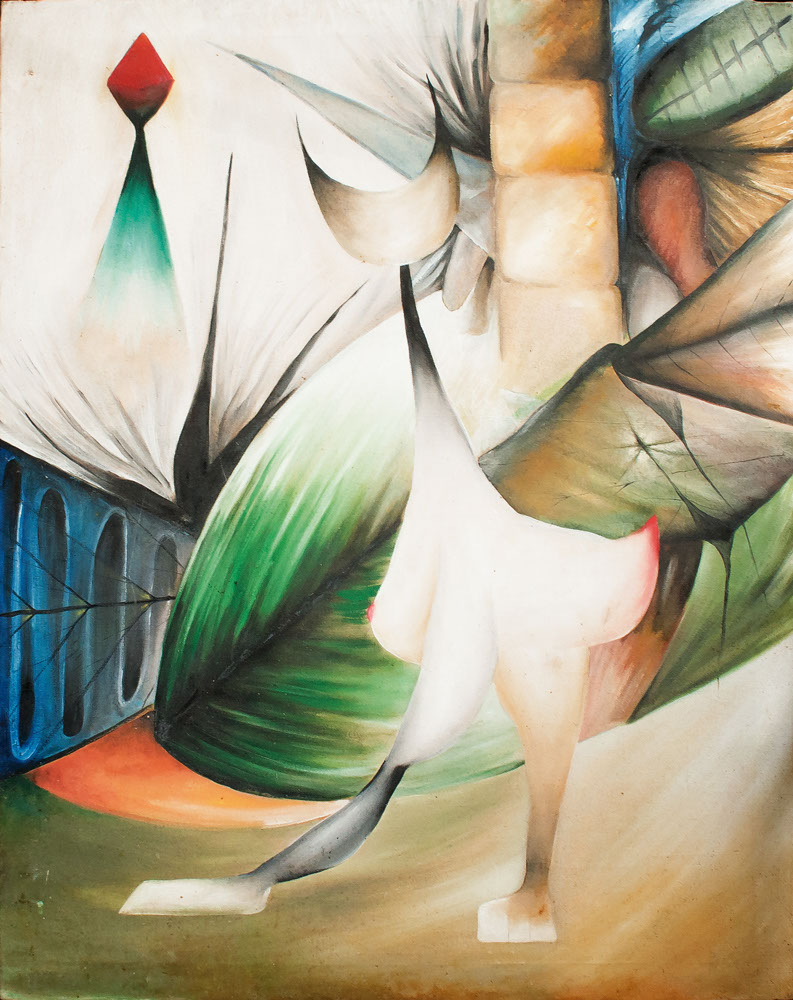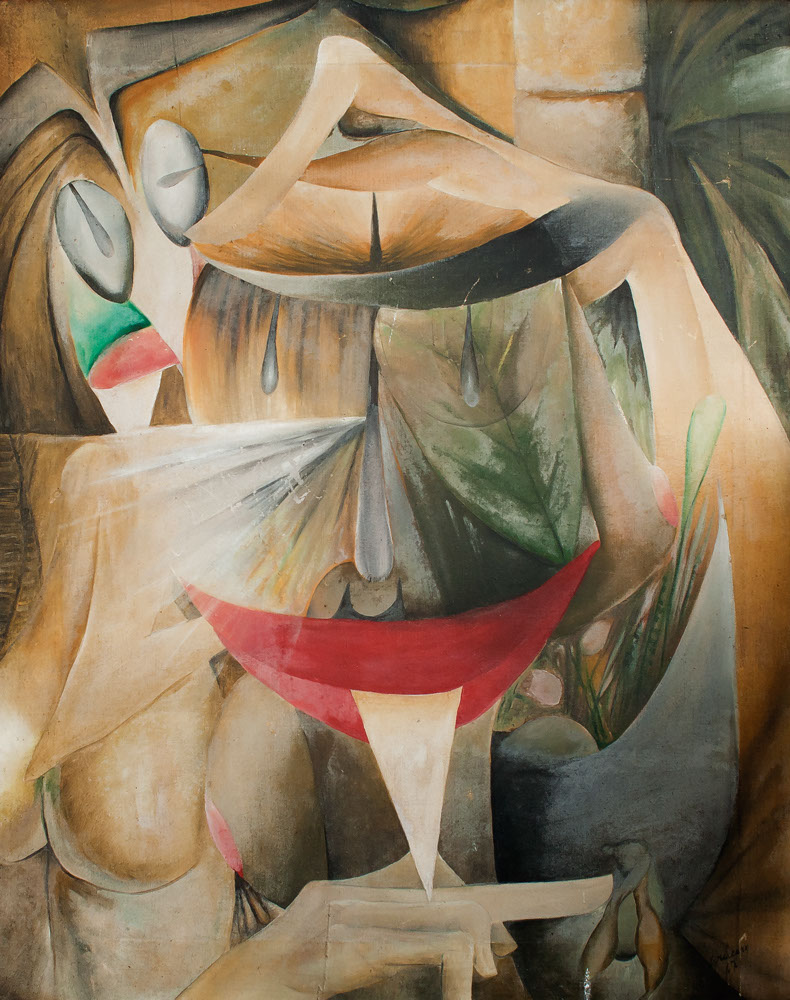MANUEL COUCEIRO PRADO
Manuel Couceiro Prado (Havana, 1923-1981): His painting was mainly dedicated to representing Cuban themes. From the beginning of his artistic work Couceiro reflected one of the conceptual sectors of our culture. It unfolded in tandem with his intense career, marked by cultural activism from his time in the Federation of University Students (FEU) in which he worked actively to organize the University Art Festivals. In his political activities he worked in exile in the United States to promote revolutionary ideology. He returned to Cuba with the triumph of the Revolution in 1959 and turned his energy to leadership in political and mass organizations.
During his stay in New York he did easel painting and murals on vernacular subjects. It is interesting to quote the curator and cultural promoter Enrique Silva Díaz, who wrote about his friend, artist, and comrade in political struggles, in the catalogue of the one-person show, “Manuel Couceiro,” an exhibition in his honor by Grupo Antillano: “I will never forget that first of January in New York, when we learned of Batista’s escape. On that day the owner of the ‘Liborio’ paid you for the painting and the mural you had done for him in the bar on the theme of the Cabildo. You had used luminous paints that at night stood out almost like stained glass. (...) Regarding your work, so Cuban for what is says and for its sensuality, it is better to let it speak for itself.”
In the 1970s Couceiro was a member of the Executive Commit- tee of the Association of Fine Arts of the Union of Cuban Writers and Artists (UNEAC), when the graphic designer Félix Beltrán was president of the Association.
Guillermina Ramos Cruz, 2012
(La Habana, 1923-1981): su labor pictórica tuvo como motivo principal la representación de lo cubano. Desde el inicio de su creación Couceiro reflejó uno de los sustratos conceptuales de nuestra cultura, la cual fue desplegada paralelamente a su intensa trayectoria vital, signada por el activismo cultural desde la FEU (Federación Estudiantil Universitaria) en la cual laboró activamente en la organización de los Festivales de Arte Universitarios. En su quehacer político trabajó en labores llevadas a cabo en los Estados Unidos durante la clandestinidad, encaminadas a lograr el predominio de la ideología revolucionaria. Regresó a Cuba con el triunfo de la Revolución en 1959 y se volcó en labores de dirección en organizaciones políticas y de masas.
Durante su estancia en Nueva York realizó pintura de caballete y murales sobre temas vernáculos. Resulta interesante citar un fragmento del texto realizado por el galerista y animador cultural Enrique Silva Díaz, quien escribió sobre su amigo, artista y compañero de luchas, para el catálogo la exposición personal “Manuel Couceiro” Exposición Homenaje Grupo Antillano: “Jamás olvidaré aquel 1ro. de Enero en New York, cuando conocimos de la escapada de Batista, aquel día el dueño del “Liborio” te pagó el cuadro y el mural que le habías hecho en el bar con el tema de un Cabildo. Esto lo habías realizado con pinturas lumínicas y de noche salía casi como un vitral. (…) De tu obra, tan cubana por lo que narra y por lo sensual, es mejor que ella misma hable”.
Couceiro fue miembro del Ejecutivo de la Asociación de Artes Plásticas de la Unión de Escritores y Artistas de Cuba, (UNEAC) durante los años setenta, cuando ocupaba el cargo de Presidente de la Asociación de Artes Plásticas el diseñador gráfico Félix Beltrán.
Guillermina Ramos Cruz, 2012


